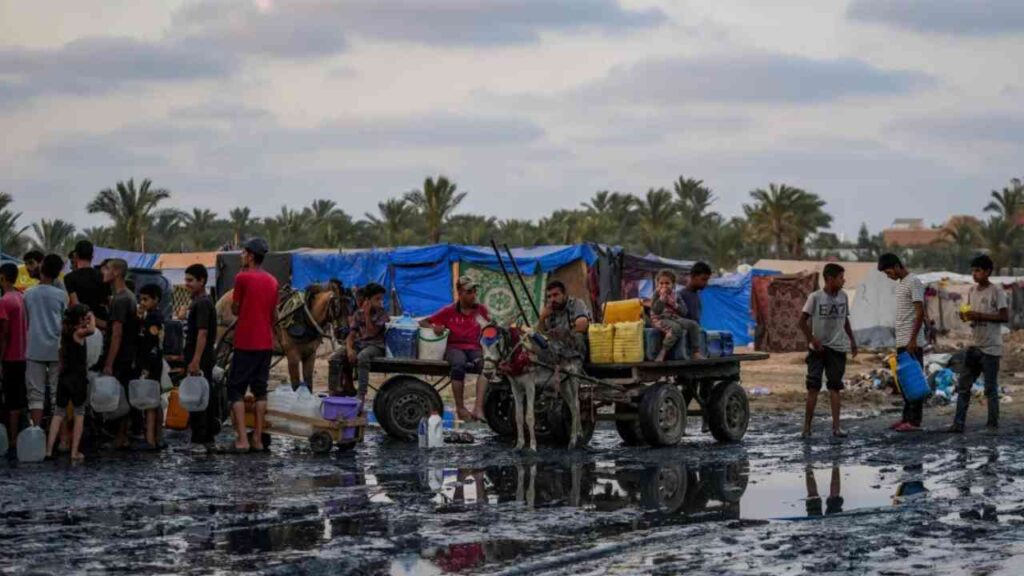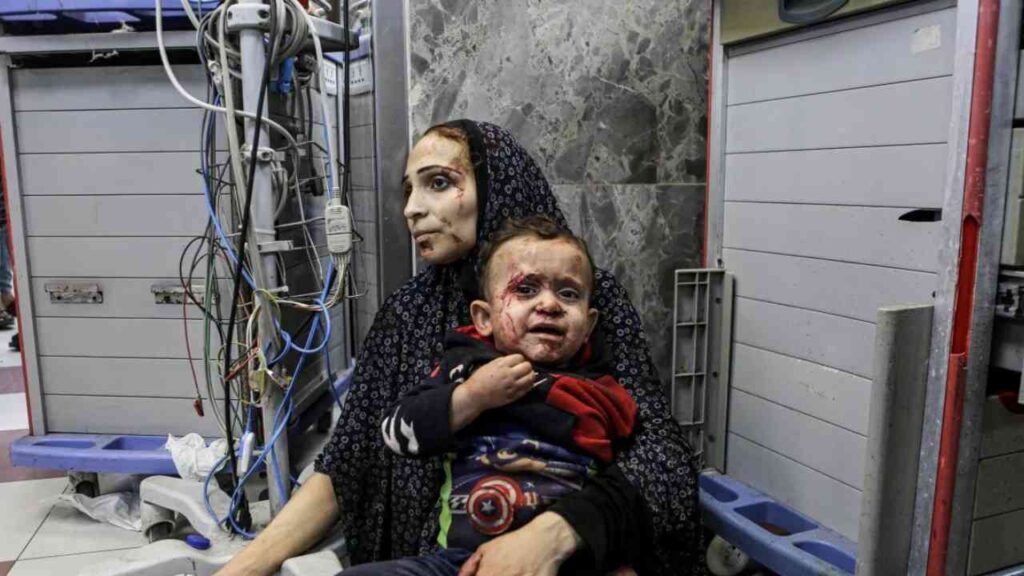Nine-Year-Old’s Weight Drops to That of an Infant as Famine Devastates Gaza’s Most Vulnerable
Gaza’s healthcare system is buckling under the weight of a severe malnutrition crisis that has seen nearly 13,000 children admitted to hospitals in July alone, with aid failing to reach those most in need.
A Child’s Desperate Struggle
Nine-year-old Maryam Dawas embodies the human tragedy unfolding across Gaza. Once weighing 25 kilograms (3 stone 9 pounds), she now weighs just 9 kilograms (1 stone 4 pounds) – roughly equivalent to a baby under one year old.
At Al-Rantisi hospital in Gaza City, Maryam’s condition has deteriorated to the point where she can no longer eat. Her ribcage protrudes sharply from her chest, and her upper arms have become thinner than her wrists. Every movement appears to be a struggle, with her tired eyes reflecting the severity of her condition.

When asked about her dreams, Maryam can only whisper: “To go back to the way I was.”
Her mother explains the family’s ordeal: “Maryam suffered from malnutrition ever since we were displaced from the north to Rafah. Because of the famine that was in the south, we went through a famine, but it wasn’t worse than the one we are in now.”
Scale of the Crisis
Maryam’s case represents a much larger humanitarian disaster. According to the UN Office for the Coordination of Humanitarian Affairs (OCHA), almost 13,000 new cases of acute malnutrition in children were recorded in July alone.
The Gaza Health Ministry reports that 251 people have died as a result of famine and malnutrition, including 108 children. These figures underscore the severity of a crisis that is affecting Gaza’s most vulnerable populations.
Healthcare System Under Pressure
OCHA Gaza representative Olga Cherevko painted a dire picture of the healthcare situation: “I went to multiple hospitals in the last week and every one of them is overwhelmed with malnutrition cases, severe malnutrition – children, teenagers, you name it.”
She emphasized how malnutrition compounds existing health problems: “Whether it’s a pre-existing condition or malnutrition on its own, the fact that it’s in the state that it is means that it exacerbates whatever condition exists on top of it.”

Disputed Statistics and Underlying Reality
Israel’s coordinator of government activities in the territories (COGAT) has claimed that Hamas is inflating malnutrition death figures and that most affected children had pre-existing health conditions. However, experts point out that famine typically targets the most vulnerable first, making pre-existing conditions irrelevant to the broader crisis.
As Nobel Prize-winning economist Amartya Sen observed in his seminal work “Poverty and Famines”: “Starvation is the characteristic of some people not having enough food to eat. It is not the characteristic of there not being enough food to eat.”
Aid Distribution Failures
While some aid has begun trickling into Gaza, distribution remains severely problematic. The assistance is reaching those strong enough to compete for it, rather than the weak and vulnerable who need it most. Much of the aid is being diverted to black markets, making it available only to those with money to purchase it.
This distribution failure particularly affects the majority of Gaza’s 2.1 million residents, who are now classified as weak, vulnerable, and poor.
Dramatic Deterioration in Food Security
The Integrated Food Security Phase Classification reveals the rapid deterioration of conditions:
- 81% of households reported poor food consumption in July, up from 33% in April
- 24% of households experienced very severe hunger in July, compared with 4% in April
- Nearly 90% of households resorted to “extremely severe coping mechanisms” to feed themselves
Impact of Blockade
This dramatic increase in food insecurity directly follows Israel’s total blockade, which lasted from March 2 to May 19. During those eleven weeks, no supplies entered Gaza, compounding the effects of nearly two years of conflict and a partial blockade that has been in place since 2007.
The complete halt of supplies during this critical period significantly worsened an already desperate situation, pushing vulnerable populations beyond their ability to cope.
International Response
The UK government has announced plans to evacuate more injured and critically ill children from Gaza “at pace.” For children like Maryam, such interventions represent a lifeline, though the announcement comes as the crisis has already claimed numerous young lives.
Broader Implications
The malnutrition crisis in Gaza highlights how conflict-related restrictions on food and medical supplies disproportionately affect children and other vulnerable populations. The situation demonstrates how quickly humanitarian conditions can deteriorate when basic necessities become inaccessible.
Healthcare workers and international observers emphasize that the current crisis goes beyond immediate malnutrition, creating long-term health consequences for an entire generation of children whose development is being permanently affected by severe nutritional deprivation.
Urgent Need for Action
As hospitals continue to be overwhelmed with new cases daily, the international community faces mounting pressure to ensure that humanitarian aid reaches those most in need. The current distribution mechanisms clearly favor those with resources and physical strength, leaving the most vulnerable – primarily children, elderly, and disabled individuals – without adequate support.
For children like Maryam, whose condition continues to deteriorate, time is running out. The crisis demands not just increased aid supplies, but fundamental changes to how assistance is distributed to ensure it reaches Gaza’s most vulnerable residents before it’s too late.






